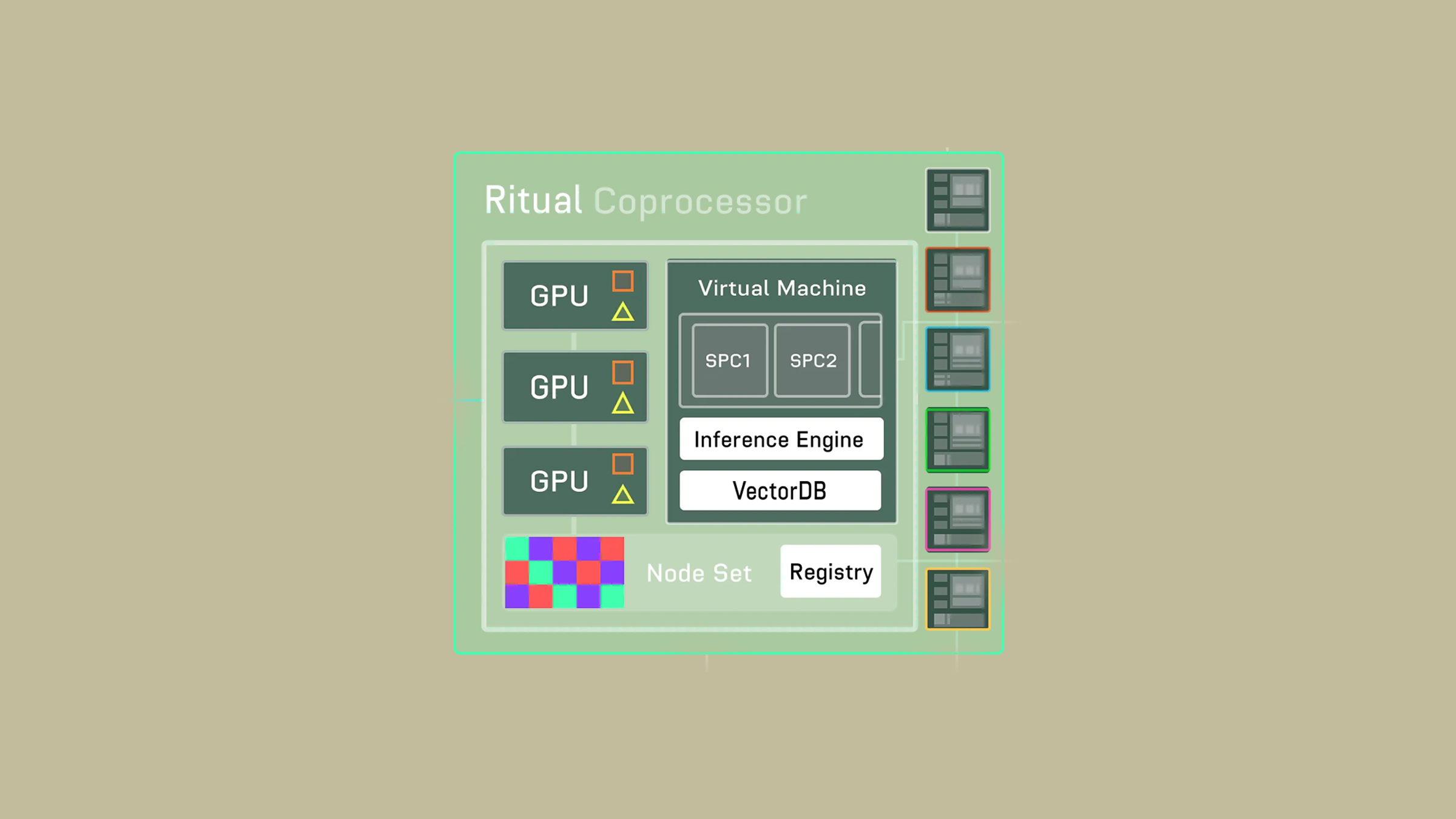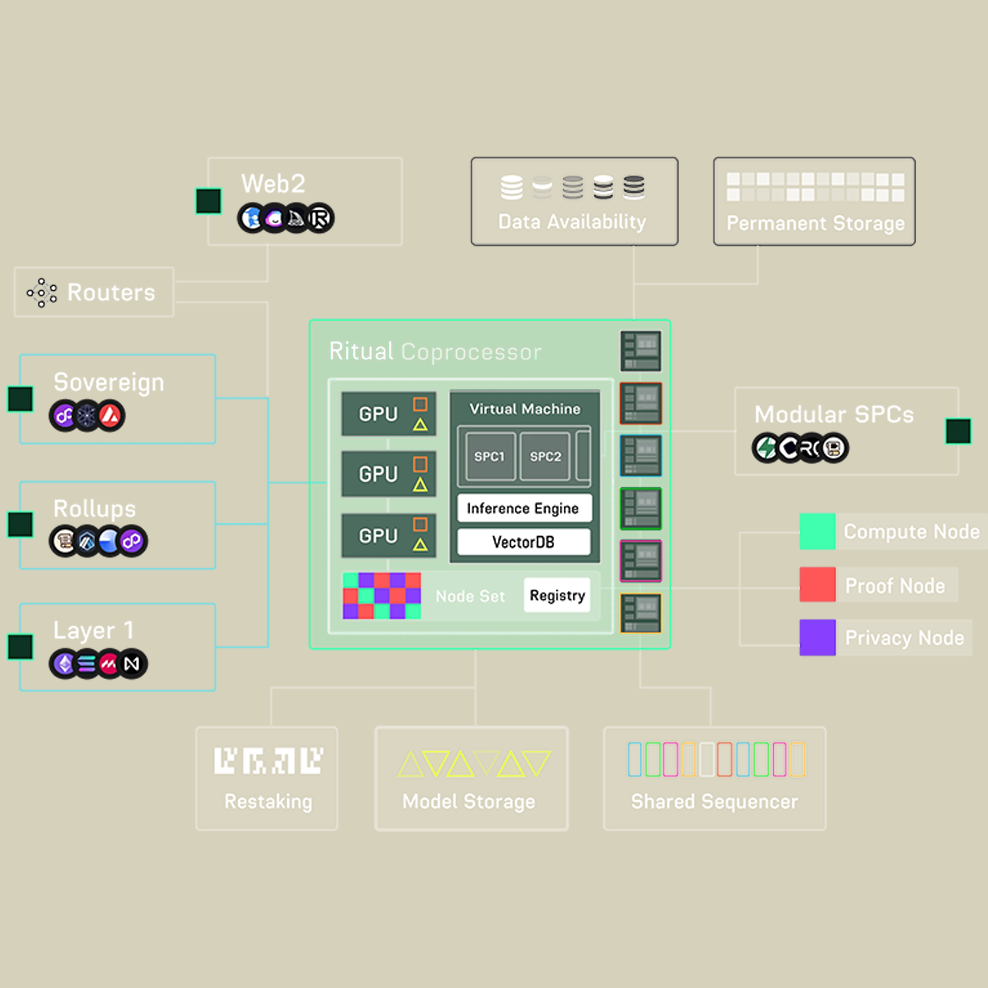Ritual Knowledge Hub
Ritual Superchain
Ritual’s Crypto-Economic AI Coprocessor
Ritual Knowledge Hub
What is the Ritual Superchain?
Exploring Ritual’s Crypto-Economic AI Coprocessor
Ritual’s technical architecture consists of different layers. Let’s have a look how its tech stack is organized and which components are part of it.
Overview of Ritual’s Tech Stack
Ritual’s stack is organized into the Ritual Coprocessor – consisting of GPUs, a VM, and the node set – as well as Infernet, the protocol’s first production implication.


In this article, we are taking a look at the Ritual Superchain.

Ritual Superchain
Ritual’s crypto-economic AI coprocessor will power a new generation of AI-enabled smart DApps. As an integral part of the Ritual architecture, the coprocessor supports computational tasks within the network.
Ritual Coprocessor
Elements of the Ritual Superchain
Ritual Coprocessor
